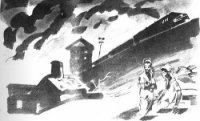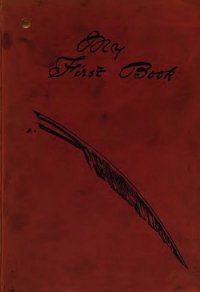Operation Nemesis: The Assassination Plot that Avenged the Armenian Genocide - Bogosian Eric (мир книг .txt) 📗
Between Yozgat and Boghazlian alone, forty-three thousand Armenians were cut down, with children and women. We also were afraid we were going to be killed. Because although the official name was “deportation,” what was really involved was a policy of organized extermination. But since we had money, together around fifteen thousand to sixteen thousand pounds in gold, we thought that in line with the general custom in the Orient of obtaining everything with “baksheesh,” we could use it to save our lives. We hoped that with gold we could accomplish everything we could not accomplish otherwise. We were not mistaken. If I’m here alive today, it’s because of baksheesh.
When we came to Yozgat, which was the bloodiest place, we saw nearby, four hours away in a valley, a couple of hundred heads with long hair, which is to say heads of women and girls. A gendarmerie captain named Shukri was with us—he had led us. (We were around forty-eight men, and with us were perhaps sixteen gendarmes on horseback.) I asked the captain: I had heard that the Armenian men were being killed, but not the women and girls. Well, he answered, if we only kill men and not women and girls as well, then in fifty years there are again a few million Armenians. So we have to also kill women and children, so that there is no internal or external disorder forever.
Balakian, because of his status as a member of the elite, had greater freedom than most in the caravan and was allowed to have conversations with the soldiers guarding the deportees.
The captain explained very simply, “We killed everyone, but not in the city.” That was forbidden, because in eighteen ninety-five to ninety-six, Abdul Hamid had ordered everyone in the city killed. The European nations learned about this, the entire civilized world, and did not want to allow this. So now no person was to remain, so that no one would appear as a witness in court.
“I can tell you about all of this because you’re going into the desert and are going to die from hunger there and have no opportunity to bring this truth to light.” He now gave us details. First of all, fourteen thousand men were taken out of the city of Yozgat and environs and killed in the valleys. The remaining families of those killed were told the men had arrived safely in Aleppo, they were doing well there, and they had asked the government to allow the families to join them. The government had allowed this, they were told, and also their taking all their movable property with them. The families would find apartments ready for them there. The families then packed everything up—their gold and silver items, their jewelry, carpets—they took all their movable property with them. The very same captain who dragged away the caravan told me about this. He himself, he explained, had had forty thousand Armenians killed between Yozgat and Boghazlian, as the gendarmerie commander. So the women now believed their husbands were living and they made preparations to join them. There were around eight hundred and forty wagons, including around three hundred and eighty ox carts, the rest being drawn by horses. Many women and children had to go on foot. A total of some sixty-four hundred women and children marched off to Aleppo.
I now asked the captain, “Why did you do this?” Then he said, “If we had killed the women and children in the cities, then we wouldn’t have known where the valuables were being kept, whether they were buried in the ground or had been destroyed somewhere. For this reason we ‘allowed’ them to take all their jewelry with them. When we had moved forward another four hours,” the captain continued his account, “we came to a valley which had three watermills. We had around twenty-five to thirty Turkish women with us.” They now began to examine the clothing of the Armenian women and girls and take away their jewelry and gold things. Because there were so many women and girls, around sixty-four hundred, this examination took the Turkish women around four days.
When the examination was finished, the captain told the Armenian women a new order had come from the government, a “pardon”: the women had permission to return to their homes.
Namely, on the way back, around an hour’s distance, there was a great plain. The wagons and drivers had been sent back earlier. The women asked why. They were told that since the pardon had come allowing them to return, they of course no longer needed any wagons, since Yozgat was only four hours away.
(The captain himself told me this. He didn’t speak like I am doing here, one thing after the other; rather, I always had to ask him in order to get an answer. My thought was that maybe I could use what I heard.)
Now, when the women tried to return to Yozgat on account of the “pardon,” many gendarmes were sent into the provincial villages, and the peasants were invited to participate in a holy war. Around twelve or thirteen thousand peasants came with axes for chopping wood and other iron implements. They were allowed to kill everyone and take only the most beautiful girls.
Balakian specifically addressed Talat Pasha’s guilt:
I am a member of the synod of the Armenian Patriarchate of Constantinople and for a long time have had many opportunities to become familiar with Turkish circumstances. I naturally also knew Talat personally. He had great influence. He did everything in full awareness. When we wanted something from the Armenian Patriarchate, he would tell us, “You don’t need to go first to the other ministers; just come straightaway to me. You don’t need to put things in writing; you can explain everything to me personally and I’ll take care of it!” He acted as if he had full responsibility and had no need to give anyone an accounting.
At another point in his testimony Balakian stated unequivocally about an incriminating telegram, “The telegram was signed ‘Talat.’ I saw it with my own eyes.” At this point in the interrogation, other damning telegrams collected at the end of the war by Aram Andonian were introduced. A debate ensued as to whether the telegrams should be admitted as evidence. Defense attorney von Gordon made his case:
But I must state what the wires contain. The wires are meant to demonstrate that Talat personally gave the order in these five wires to seize all Armenians, including Armenian children. Initially the order was given to keep alive only those children who were not in a position to remember what happened to their parents. Later, in March 1916, the order was narrowed, so that all those in orphanages were to be removed and exterminated because, after all, only elements damaging to Turkey would come from these children. The witness Andonian will be able to testify concerning the authenticity of these wires: he received these wires directly at the sub-directorate, which was made accessible to the Armenian delegation after occupation by the British. I personally consider it possible, even probable, and hope that the jury members believe the defendant in his insistence that he for his part was firmly and not without good reason convinced—not superficially but deep within his heart—that Talat was the author of these fearful atrocities against the Armenians and is responsible for them. I can waive presenting a motion to submit evidence only if you become convinced of this.
The district attorney was tired of the lecturing on the part of the defense. He addressed the judge:
I request that such a motion be denied. In a very extensive manner, Your Honor has already allowed a discussion of whether or not Talat is guilty of the Armenian atrocities. But this question is entirely extraneous. For in my view there can be no doubt that the defendant was of the opinion that in Talat, the man bearing the guilt for these atrocities stood before him. This fully explains his motive. I also believe that clarifying the question of Talat’s guilt is completely out of the question in this courtroom. For a historical judgment would have to be made, then, that requires entirely different material from what is available here.




